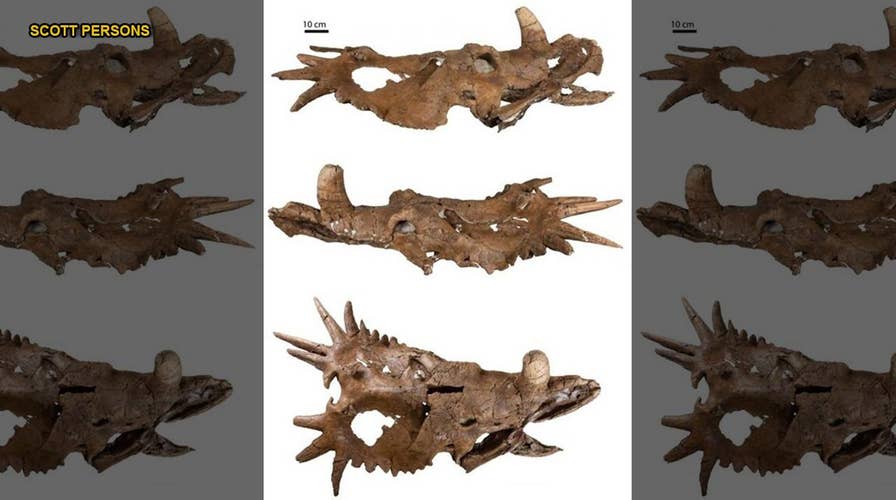Paleontologists stunned as dinosaur skull discovery throws previous assumptions for a loop
Paleontologists have always believed that dinosaurs had symmetrical faces. But now, a newly discovered Styracosaurus skull has been unearthed, which throws those previously conceived notions for a loop. Researchers were surprised that it had horns that were not symmetrical, and said that if found separately, paleontologists could have guessed they were from two different species.
A newly discovered dinosaur skull has shaken paleontologists' assumptions to the core, throwing a wrench into the idea that all dinosaurs had symmetrical faces.
The fossilized skull of the Styracosaurus was unearthed and researchers were surprised that it had horns that were not symmetrical. They were also surprised that the differences on the left and right halves of the skull were so extreme, that if they were found separately, paleontologists could have guessed they were from two different species.
"When parts of one side of the skull were missing, paleontologists have assumed that the missing side was symmetrical to the one that was preserved," said Scott Persons, who discovered the skull, in a statement. "Turns out, it isn't necessarily."

Hannah's skull, seen from all sides. The jacket used to recover Hannah’s skull weighed 2, 500 kilograms — requiring a helicopter to retrieve from the field! (Credit: Scott Persons)
WEIRD TRIASSIC 'DRAGONS' HAD MASSIVE HEADS. HERE'S WHY.
"Today, deer often have left and right antlers that are different in terms of their branching patterns. Hannah shows dramatically that dinosaurs could be the same way," Persons, who is one of the study's co-authors, added.
The Styracosaurus has been nicknamed Hannah, after Persons' dog. It was discovered in Dinosaur Provincial Park, Calgary, Alberta, Canada in 2015.
"As in the type, the right lateral parietal bar bears seven epiossifications, but the left parietal bar has eight," the researchers wrote in the study's abstract. "Epiossifications p3‒p6 are asymmetrical with respect to size, orientation, and position relative to the midline. A re-evaluation of variation in Styracosaurus that includes this skull expands the morphological range of the taxon to incorporate Rubeosaurus ovatus, requiring the synonymy of the latter with the former."
120M-YEAR-OLD BIRD THAT LIVED DURING THE AGE OF DINOSAURS DISCOVERED IN JAPAN
Despite naming the dinosaur after his dog, Hannah, it's unclear whether the dinosaur was actually a female. But the 3-D laser scan of the skull that was done, in conjunction with other researchers, has wide-ranging implications for the future of paleontology, Persons added.

Paleontologist Scott Persons, pictured alongside the partially uncovered skull. The Styracosaurus skull has implications for how horned dinosaurs are identified. (Credit: Scott Persons)
"This is the future of paleontological collections: digital dinosaurs."
The research has been published in the scientific journal, Cretaceous Research.





















